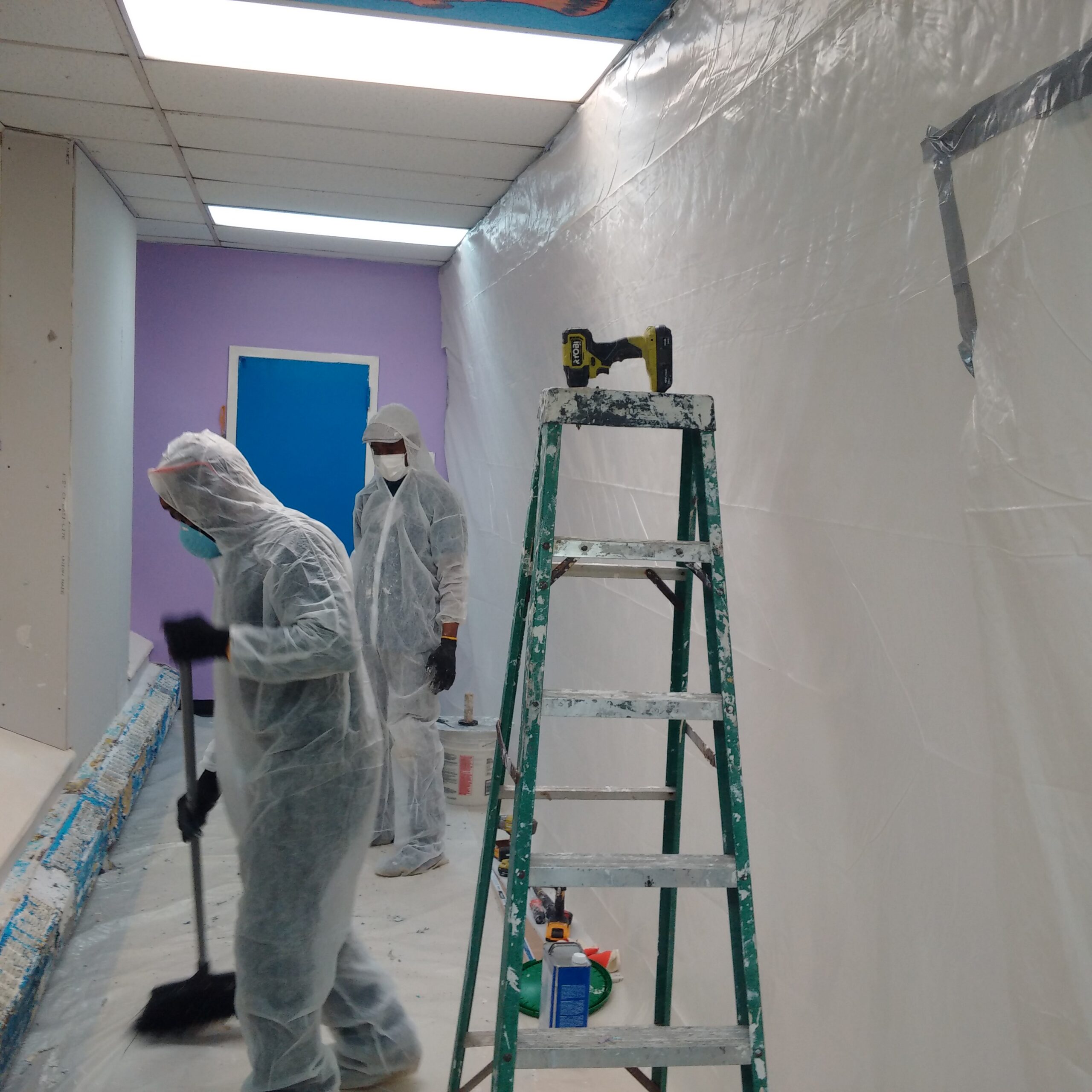NYC Lead Removal Contractors-- Obtain Safe and Efficient Providers
NYC Lead Removal Contractors-- Obtain Safe and Efficient Providers
Blog Article
Step-by-Step Refine for Successful Lead Infraction Removal
Following this, adherence to government and state policies is extremely important to formulating an effective removal plan. The real remediation requires experienced employees to carry out these plans while purely following security protocols. What occurs after the remediation is finished?

Detection and Evaluation
Discovery and analysis are critical steps in the remediation of lead infractions. To make certain an effective remediation process, it is necessary to carry out a comprehensive assessment of the atmosphere where possible lead direct exposure exists.
This consists of examining the degree and seriousness of contamination, as well as identifying populations at threat, particularly children and expectant females. The gathered information need to be thoroughly documented to support the growth of an efficient removal technique.
Furthermore, it is vital to prioritize locations with the highest degree of contamination and those that posture the best health and wellness risks. Reliable interaction with stakeholders, consisting of residential or commercial property proprietors, citizens, and public health authorities, is crucial for ensuring that all events are informed concerning the findings and the succeeding actions required for removal. This initial discovery and evaluation stage lays the foundation for an effective lead violation removal process.

Legal and Regulatory Compliance
Navigating the landscape of legal and regulatory conformity is an essential element of effective lead violation remediation. Compliance ensures not just the safety of afflicted populaces yet also the credibility and legal standing of the company responsible for remediation.
State and neighborhood policies can vary, commonly enforcing added commitments or even more stringent standards. As a result, a detailed understanding of all pertinent lawful structures is important. This involves meticulous documentation of all remediation activities to demonstrate compliance. Failing to stick to these laws can result in extreme fines, consisting of large fines, legal activity, and reputational damages.
Involving legal experts concentrated on ecological legislation can help with browsing these intricacies. Routine training and qualification for all employees associated with the remediation procedure are additionally compulsory to guarantee adherence to security and regulative criteria. By focusing on lawful and regulative conformity, organizations can properly alleviate risks and attain a successful remediation end result.
Preparation the Remediation
Successfully planning the remediation of lead offenses starts with a complete assessment of the polluted website. This data-driven method ensures that remediation efforts are suitably targeted and efficient.
Once the contamination is mapped, a danger evaluation need to be conducted to examine possible wellness risks to humans and the setting. Lead Violation Removal in NYC. This assessment ought to think about variables such as direct exposure pathways, populace vulnerability, and environmental influences. The understandings collected will form the basis for picking a suitable remediation technique
Subsequently, setting clear, attainable purposes for the removal task is crucial. These objectives ought to line up with regulative criteria and stakeholder assumptions to ensure conformity and area approval. Creating a comprehensive remediation plan that describes techniques, timelines, and resource allocation will promote an organized technique to the clean-up process.
Furthermore, it is important to involve with stakeholders early and keep transparent communication throughout the planning stage. This consists of notifying regional neighborhoods, getting essential authorizations, and collaborating with regulatory companies to guarantee all lawful and procedural needs are fulfilled. A well-crafted removal strategy not only addresses the contamination effectively yet likewise constructs trust fund and teamwork among all parties included.
Performing the Remediation
With a well-structured remediation plan in position, the focus changes to the actual implementation of the remediation tasks. This phase entails setting in motion the necessary sources, consisting of proficient workers, customized equipment, and high-quality products. Begin by clearly delineating duties and obligations to ensure liability and seamless sychronisation among group members.
This consists of establishing up control areas to avoid lead dust and particles from dispersing, as well as using air filtering systems to keep air quality. Bonuses Utilize techniques such as wet scuffing, chemical removing, or encapsulation, depending on the seriousness and place of the contamination.
Throughout the removal procedure, conduct routine inspections and air quality keeping track of to guarantee compliance with regulative requirements. Efficient interaction with stakeholders, consisting of residential or commercial property owners and passengers, is vital to maintain them educated of development and any type of unanticipated growths. By carefully complying with these steps, the remediation activities can be executed efficiently and successfully, eventually mitigating lead risks.
Post-Remediation Techniques
Post-remediation techniques play a vital role in making certain the long-lasting success of lead offense remediation efforts. These strategies incorporate continuous monitoring, maintenance, and area education and learning to avoid future lead exposure and ensure a secure setting.
First, routine monitoring is essential. This entails regular testing of the formerly impacted areas to make sure that lead levels continue to be within risk-free limits. Residential or commercial property proprietors must establish a timetable for these tests, preferably in partnership with certified environmental professionals.

Third, informing the community plays a crucial function in sustaining the advantages of remediation. Locals and residential property managers need to be notified concerning the my link risks of lead direct exposure and the very best techniques for maintaining a lead-safe setting. Workshops, informational handouts, and community meetings can be efficient tools for sharing this information.
Final Thought
Effective lead infraction removal calls for a comprehensive, systematic method including detection and evaluation of contamination, adherence to legal and regulative requirements, careful preparation, and efficient implementation of removal efforts. This methodical process emphasizes the value of sites thoroughness and vigilance in addressing and reducing lead contamination.
Report this page